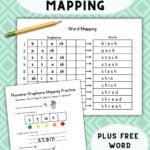All About Orthographic Mapping + FREE Worksheets
This post may contain affiliate links. As an Amazon affiliate, we earn from qualifying purchases.
Learn all about orthographic mapping and its importance in building fluent readers. You’ll also get 2 free word mapping sheets for effective phoneme-grapheme mapping practice, so your students can turn unknown words into sight words!
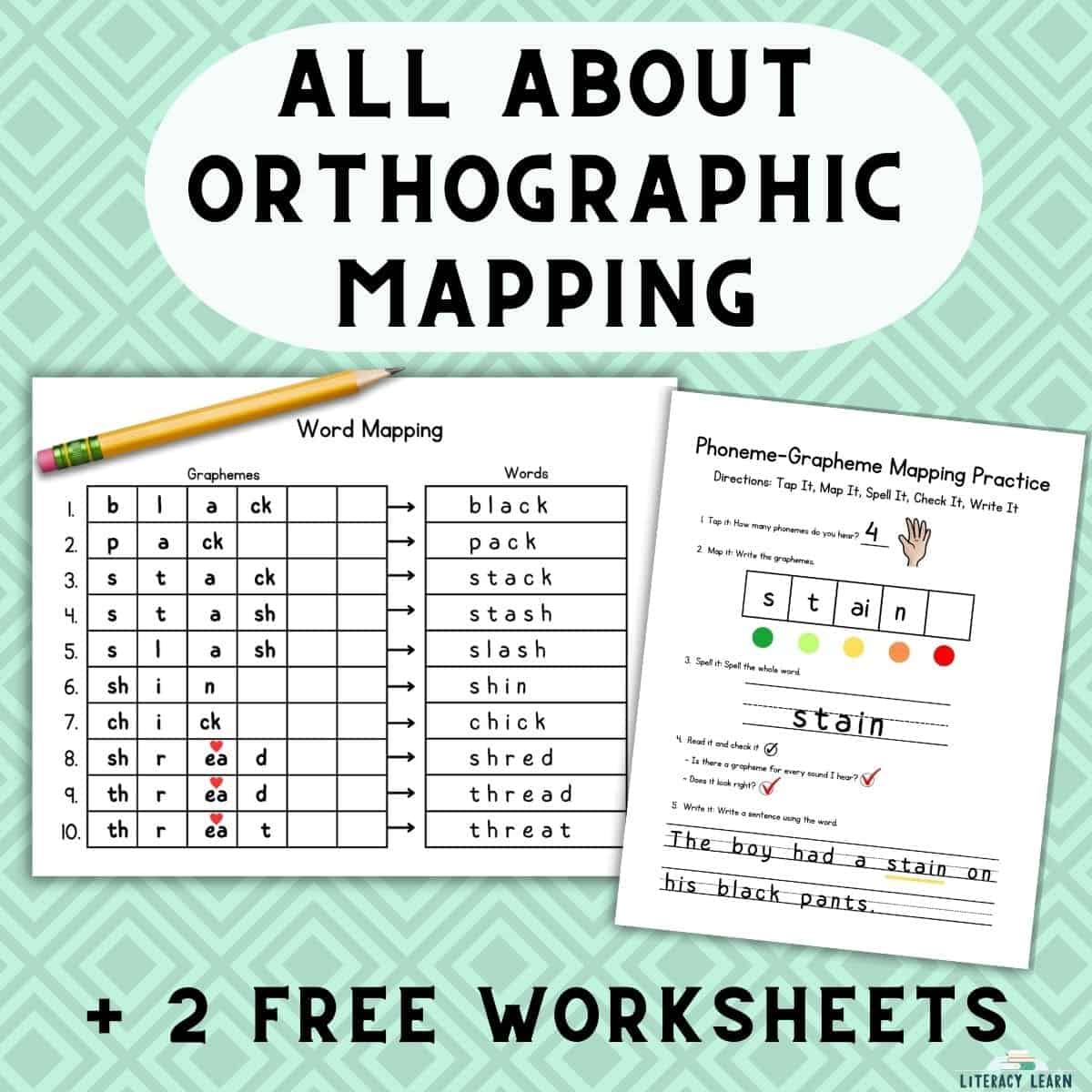
What is Orthographic Mapping?
Orthographic mapping (OM) is the process our brains go through to create a permanent connection with words. The process creates a storage system within the brain that allows readers to recognize words in an instant. It’s how words become sight words!
“Orthographic mapping is the process of forming connections between the letters in a word and the sounds in the word’s pronunciation, allowing readers to recognize the word accurately and efficiently.”
Dr. David Kilpatrick, author of “Essentials of Assessing, Preventing, and Overcoming Reading Difficulties”
💡 Think about this! If you’re reading these words, your brain has already mapped all the words that you’re reading! You have tens of thousands of words permanently stored. You can read each one instantly and know its meaning, without any effort at all.
But take the word foofaraw, which means: a great fuss or disturbance about something very insignificant.
It might take you a second, and you would need to use your knowledge of sounds, letters, and syllables in order to read this word and spell this with accuracy. You’d also need to connect it with meaning.
If you did this enough times, your brain would begin to create a permanent pathway and it would be mapped into your brain. This is the process of orthographic mapping.
How Orthographic Mapping Works
When we see a new word, our brain has to process the letters or letter units (graphemes) and sounds (phonemes).
It then must make connections between them, along with the way the word sounds (pronunciation) and what it means (definition).
If we do this enough times with the same word, the brain begins to form a mental ‘map’ that links the letters to their sounds and meaning.
“The sound-to-letter matching process of spelling benefits orthographic learning and anchors the spelling, sound, and meaning connections in long-term memory. This, in essence, how brain based spelling representations – our brain words – are formed.“
Gentry, R., & Ouellette, G. (2019) Brain words: How the science of reading informs teaching. Stenhouse.
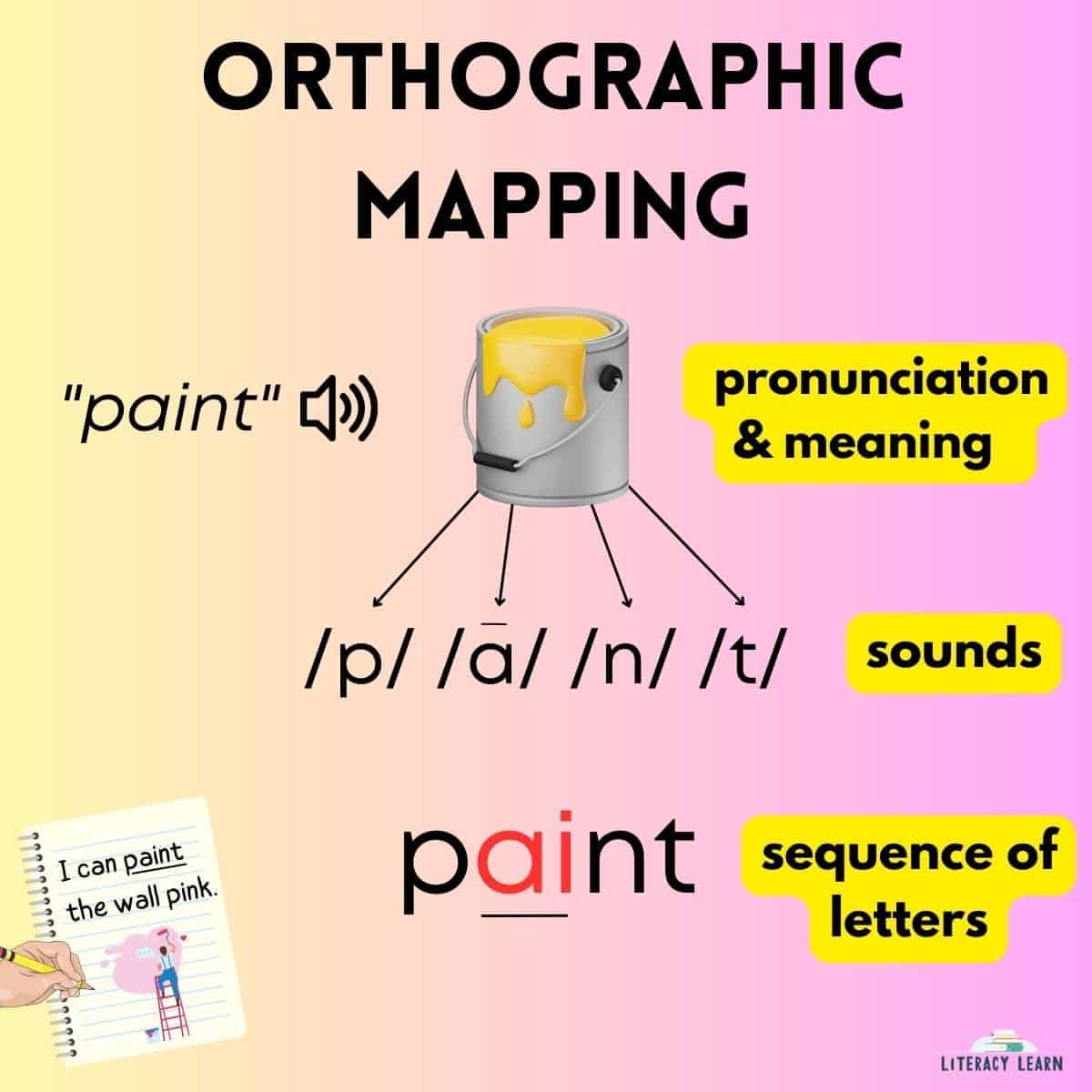
Orthographic mapping is a required and necessary process for creating fluent readers. And remember, fluency is one of the five essential building blocks to reading!
👉 Important: Orthographic mapping is different from decoding:
- Decoding, simply put, is using strategies to read or pronounce a word correctly.
- Orthographic mapping is a much more involved process since it includes sounds, spellings, pronunciations, and meanings.
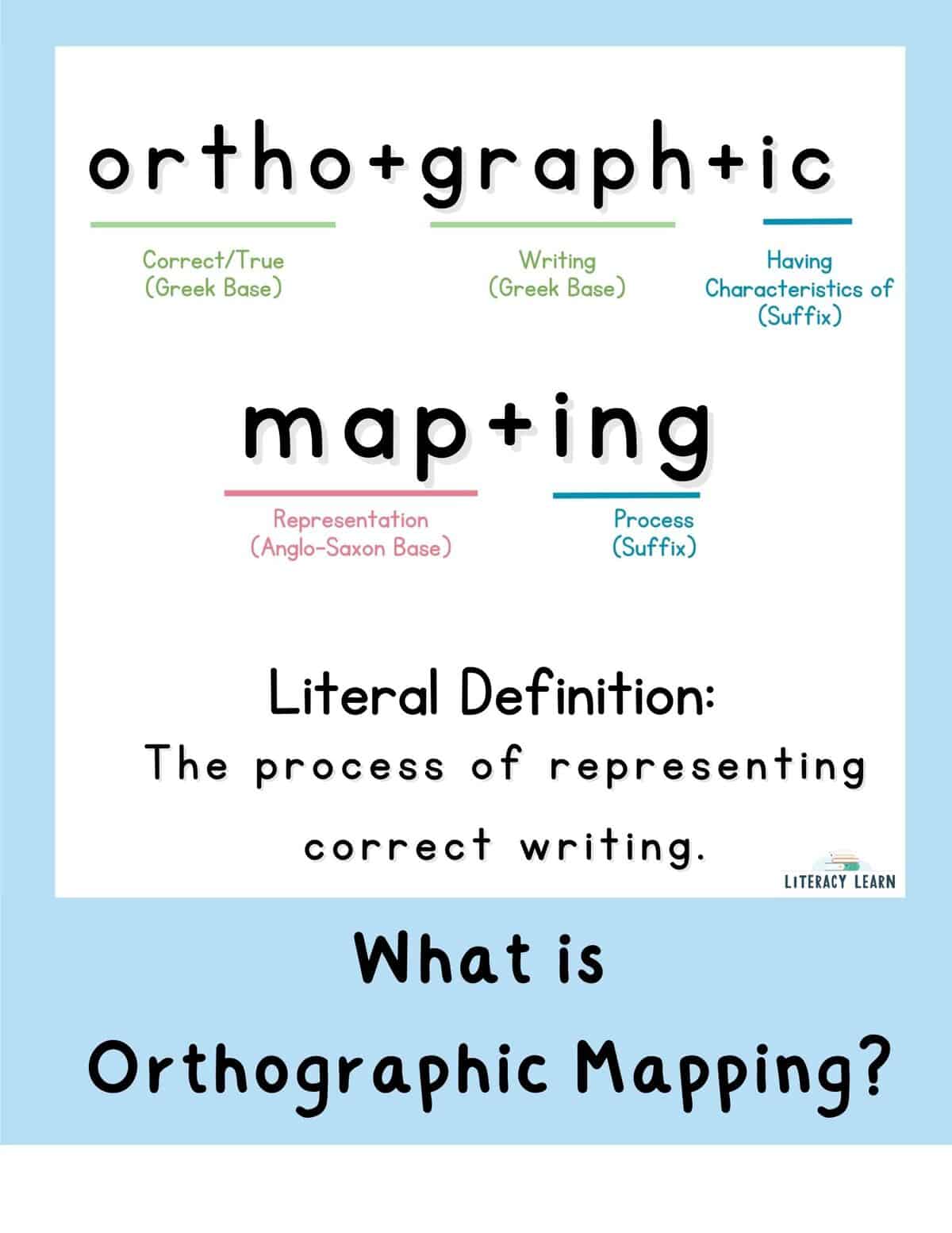
Morphology
Let’s talk morphology! The word orthographic includes two Greek bases and one suffix. The word mapping has one Anglo-Saxon base word and one suffix. A word sum would look like this:
ortho + graph + ic map + ing
ortho (means ‘true/correct’) + graph (means ‘writing’) + ic (means ‘having characteristics of).
map (means ‘representation’) + ing (means ‘the process of)
Literal Definition: The process of representing correct writing.
(❔Curious about why map + ing = mapping has two P’s? Learn more about the doubling rule!)
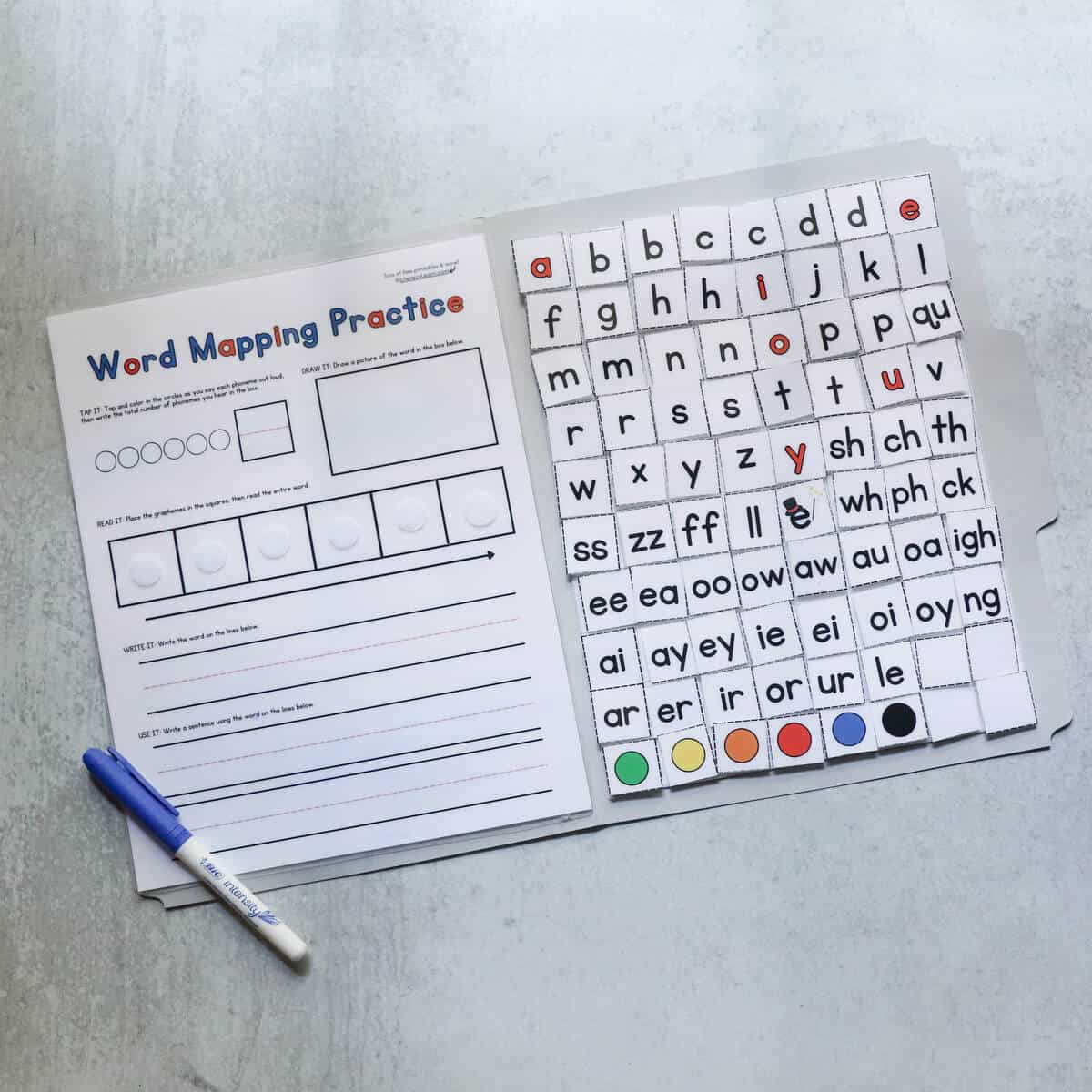
Activities for Orthographic Mapping
Orthographic Mapping is not a strategy you can teach. Instead, it is a process that students must go through.
So how can teachers promote orthographic mapping with their students to improve word recognition? We’ve outlined strategies and activities below:
- Direct, Explicit Phonics Instruction. Teachers should provide explicit instruction in phonics, following a systematic and sequential scope and sequence.
- Phonemic Awareness Activities. This is foundational and necessary for success OM words. Use the free PAST assessment to see if your students need targeted phonemic awareness practice. If so, two strong programs include Kilpatrick’s one-minute drills or Heggerty’s daily phonemic awareness activities.
- Word Study. Word study activities teach children to recognize units of letters, spelling patterns, and make connections between words. Words Their Way is one of the best for word study.
- Using Multimodal Approaches. Engaging all senses in authentic, multisensory ways helps the learning to stick, particularly for kids with dyslexia.
- Use resources that promote phoneme-grapheme mapping. These will help kids visually see the connections between the sounds they hear in words and the graphemes while connecting with meaning. BONUS: Download free printable options here in this post!
- Explicitly teach irregular words. Teach words with irregular parts as “heart words” since the majority of the sounds can be decoded, but the irregular parts should be memorized by heart. Get the ultimate heart word resource!
FREE Phoneme-Grapheme Worksheets
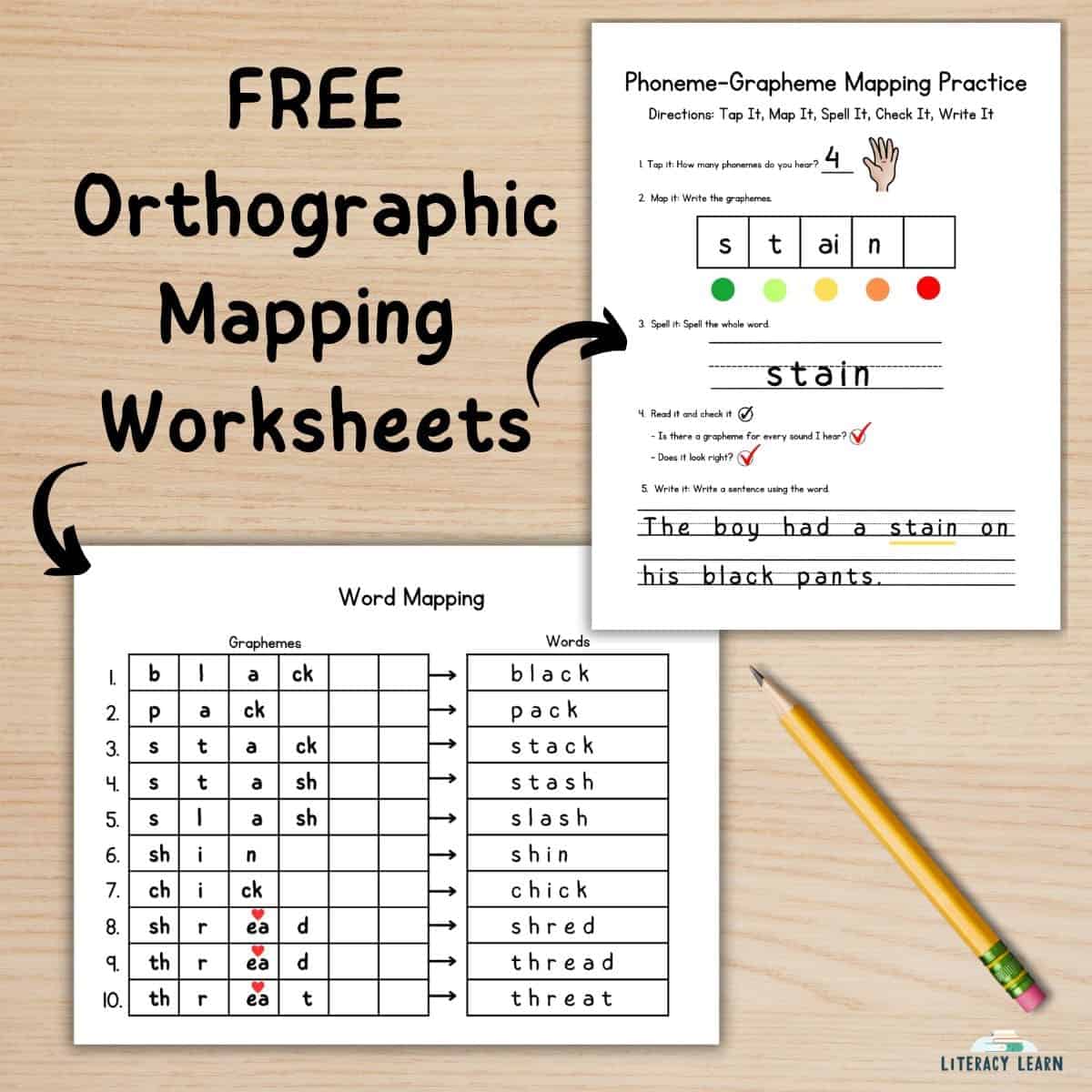
We’re providing two FREE worksheets to promote the process of orthographic mapping with your students.
They’re specifically designed for phoneme-grapheme mapping to build word recognition, vocabulary, and spelling skills.
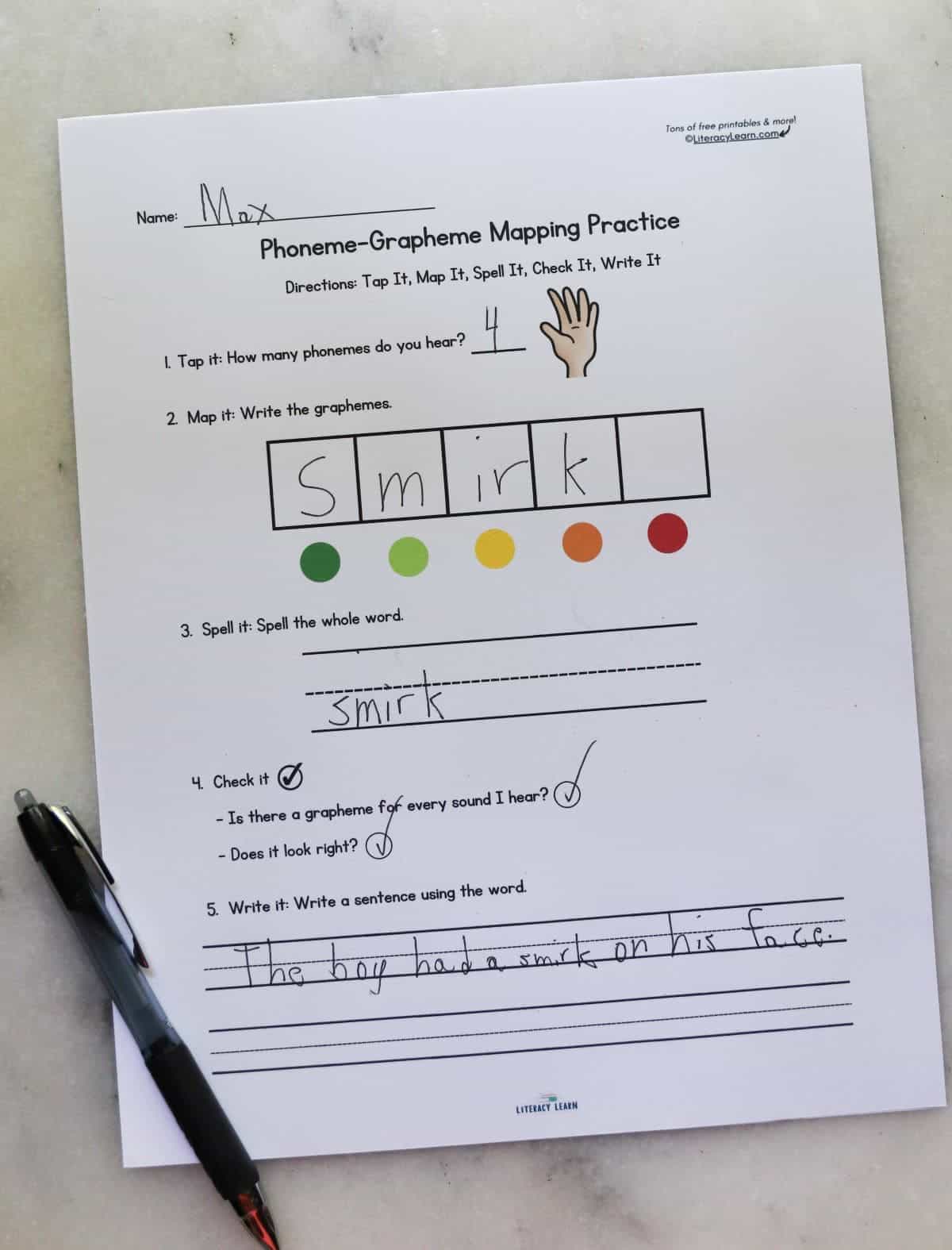
Tap & Map Phoneme-Grapheme Mapping Worksheet
This free worksheet is perfect when working on one specific word. It works great when explicitly teaching a new irregular word or any vocabulary words focused on definitions and meaning.
- Tap It: Using their fingers (or other manipulatives), kids will listen for how many phonemes (sounds) they hear in the word. A blank space is included to write the number of sounds.
- Map It: Using sound boxes, kids will map the graphemes (letters or letter units) to the sounds in the correct order.
- Spell It: Write the letters together on the line, saying the letter names aloud as they write.
- Check It: After they write the graphemes, kids look at the word and check it asking themselves two questions: Is there a grapheme for every sound I hear? Does it look right? If they can check it, they can move on.
- Use It: Now it’s time to apply the word. Students use the word in an original sentence, using proper capitalization, spacing and spelling, and punctuation. Finally, they can read the sentence aloud.
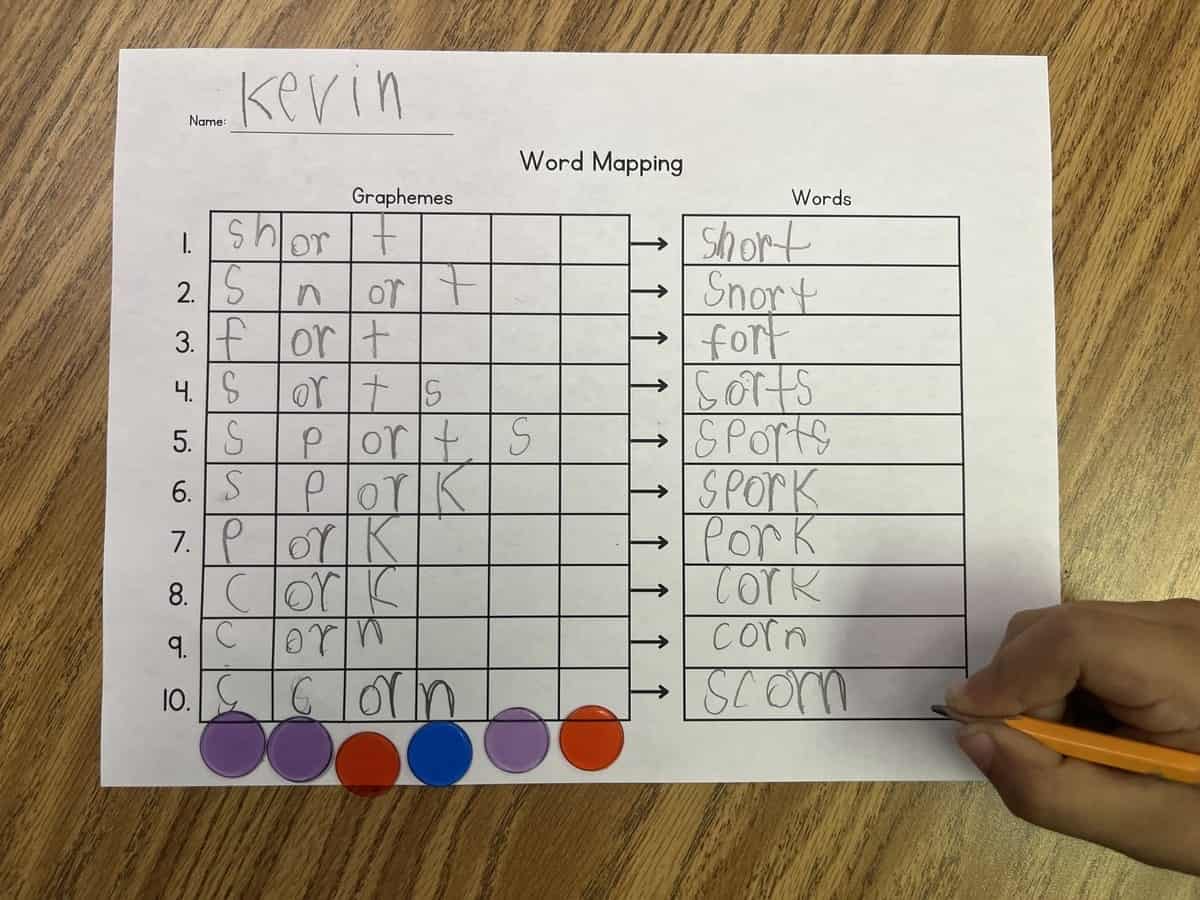
Phoneme-Grapheme Mapping Worksheet
Great for up to 10 words. I like focusing on one or two phonics concepts at a time, with some review concepts built in. This worksheet can be used in a similar way to word ladders or word chaining.
- Use word lists for dictation or picture cards for independent practice.
- Students finger tap to listen to how many sounds they hear in the word. Each sound gets its own box.
- Next, students write the graphemes in each sound box.
- Students spell the entire word, saying each letter name as they write it.
- For fluency, they should read the words quickly going down the row, then back up, then back down. They will have read 3x in total.
Looking for more? You can also grab our FREE orthographic mapping worksheets for 3, 4, and 5 phoneme words. You can also get our super popular Sound Boxes and Phoneme-Grapheme Mapping product on TPT!

Recommended Resources
To learn even more about Orthographic Mapping, check out these top resources from leading Science of Reading field experts:
- “Speech to Print: Language Essentials for Teachers” by Dr. Louisa Moats. This book offers a comprehensive approach to teaching reading and writing, including a focus on orthographic mapping.
- “Essentials of Assessing, Preventing, and Overcoming Reading Difficulties” by Dr. David Kilpatrick. Reading this book will provide you with a detailed overview of orthographic mapping and its importance in reading development.
- “Teaching Reading Sourcebook, Updated Second Edition” by Bill Honig, Linda Diamond, and Linda Gutlohn. This comprehensive book offers research-based strategies for teaching reading, including a section on orthographic mapping.
- The International Dyslexia Association website. The IDA is a nonprofit organization that promotes evidence-based practices for teaching individuals with dyslexia. Their website includes information and resources related to orthographic mapping and other topics related to literacy instruction.
These sources will provide teachers with a solid foundation of what orthographic mapping is, along with strategies for promoting its development in students.
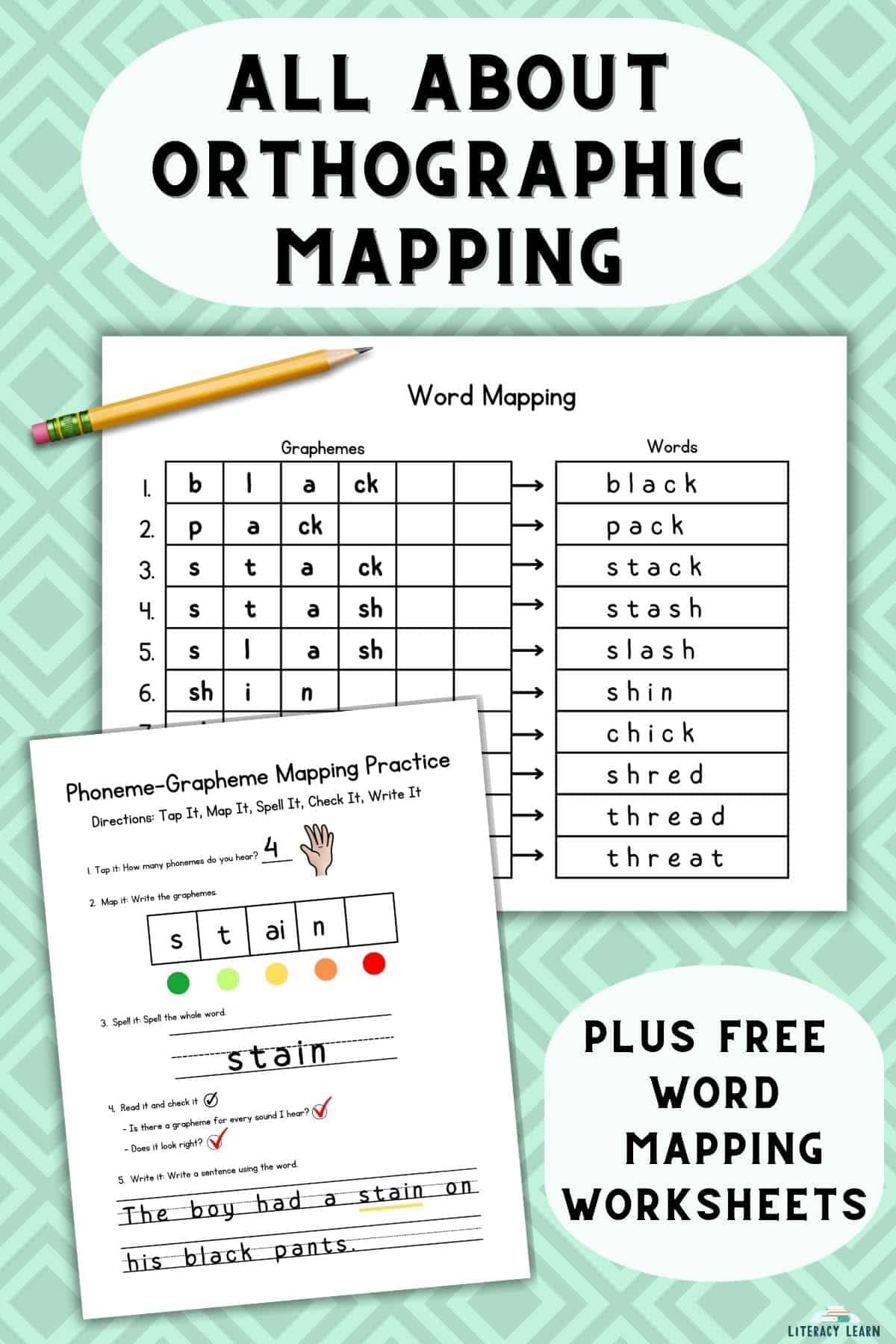
🖨 Download & Print
We’d love to hear about your experience using these resources!
Please leave a comment below or tag us on Instagram @literacylearn!
DOWNLOAD TERMS: All of our resources and printables are designed for personal use only in homes and classrooms. Each teacher must download his or her own copy. You may not: Save our files to a shared drive, reproduce our resources on the web, or make photocopies for anyone besides your own students. To share with others, please use the social share links provided or distribute the link to the blog post so others can download their own copies. Your support in this allows us to keep making free resources for everyone! Please see our Creative Credits page for information about the licensed clipart we use. If you have any questions or concerns regarding our terms, please email us. Thank you!

